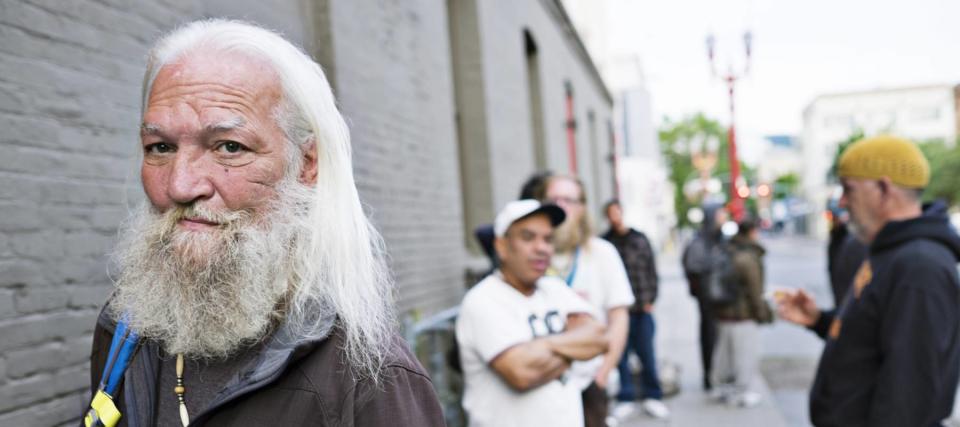‘Unconscionable’: Baby boomers in America are becoming homeless at a rate ‘not seen since the Great Depression’ — here’s what’s driving this terrible trend

Many baby boomers across the country are now coming to terms with the hard reality that working for your entire adult life is no longer enough to guarantee you’ll have a roof over your head in your later years.
Thanks in part to a series of recessions, high housing costs and a shortage of affordable housing, older adults are now the fastest-growing segment of America’s homeless population, according to a report in the Wall Street Journal, based on data from the Department of Housing and Urban Development.
Don't miss
Thanks to Jeff Bezos, you can now use $100 to cash in on prime real estate — without the headache of being a landlord. Here's how
Find out how to save up to $820 annually on car insurance and get the best rates possible
Finish 2023 stronger than you started: 5 money moves you should make before the end of the year
“The fact that we are seeing elderly homelessness is something that we have not seen since the Great Depression,” University of Pennsylvania social policy professor Dennis Culhane told the Journal.
Here’s what has triggered what some experts are calling a “silver tsunami” — and what they say needs to change to reverse the tide.
Baby boomers are increasingly becoming homeless
The Cost-of-Living Adjustment (COLA) for social security will increase by 3.2% in 2024, matching the rate of inflation as of October. Despite this, the additional funds may not be enough to help the aging population.
Dr. Margot Kushel, a professor of medicine and director of the Center for Vulnerable Populations and Benioff Homelessness and Housing Initiative the University of California San Francisco (UCSF), has observed an escalating rate of homelessness among older Americans.
In a 2020 journal article for the American Society on Aging, Kushel wrote that of all the homeless single adults in the early 1990s, 11% were aged 50 and older. By 2003, she says that percentage grew to 37%.
Now, the over-50 demographic represents half of the homeless single adults in the U.S. — with no sign of their numbers slowing, leaving baby boomers (those aged 57 to 75) particularly vulnerable.
“Elderly homelessness has been rare within the contemporary homeless problem. We’ve always had very few people over 60 who’ve been homeless historically,” Culhane from the University of Pennsylvania told PBS NewsHour.
But in recent years, Culhane says that has changed. Older Americans, he says, are “now arguably the fastest rising group.”
Read more: Owning real estate for passive income is one of the biggest myths in investing — but here's how you can actually make it work
Here’s what’s changed
After living through multiple recessions, leaving some of them with little savings, aging boomers are now also contending with insufficient affordable housing. And should they need additional support at a certain point, finding a low assisted living center is becoming more challenging — as the field contends with labor shortages, inflation and reduced funding that puts the already limited number of facilities at risk of closing.
Even rent is becoming increasingly out of reach in certain areas, like Massachusetts, New York and Florida.
During the COVID-19 pandemic, Florida resident Judy Schroeder told the Journal the apartment building she was living in was sold to a new owner, raising her monthly rent by more than $500. Schroeder lost her part-time job, leaving her living off Social Security alone, and couch-surfing for months before she finally found a place in late August.
And it's not just the cost of shelter — older adults on fixed incomes are struggling to scrounge up what they need to cover basic necessities.
“I never thought, at 71 years old, that I would be in this position,” she said.
What can be done?
Researchers at UCSF told the Journal that about half of the homeless older adults in places like Oakland, California and New York, became unhoused for the first time after their 50th birthday.
These individuals pointed to a major event, like the death of a spouse or a medical emergency, as the trigger.
“It’s an entirely different population,” said Kushel. “These are people who worked their whole lives. They had typical lives, often working physically demanding jobs, and never made enough to put money away.”
She says expanding the supply of affordable housing and availability of rental assistance programs, eviction protections and renters’ rights could be key to preventing homelessness.
Some cities, like San Diego, have even piloted programs to provide rental subsidies for a limited time to older, low-income adults to help them find their feet.
There’s also the matter of income, as advocates point out that the federal minimum wage of $7.25 has failed to keep up with inflation. And while most states supplement federal programs like Supplemental Security Income (SSI) and Social Security Disability Insurance (SSDI), Kushel believes increasing SSI or state supplements could make the difference for older adults and those with disabilities struggling to afford housing.
“In a country as wealthy as the United States, homelessness for anyone — but particularly older adults — is unconscionable,” Kushel wrote in 2020.
“We have the means to end homelessness in older adults. By increasing affordable housing for older adults, engaging in targeted prevention efforts, and building off the success of permanent supportive housing, we can make homelessness for older adults rare and brief.”
What to read next
Commercial real estate has outperformed the S&P 500 over 25 years. Here's how to diversify your portfolio without the headache of being a landlord
Millions of Americans are in massive debt in the face of rising rates. Here's how to get your head above water ASAP
Rising prices are throwing off Americans' retirement plans — here’s how to get your savings back on track
This article provides information only and should not be construed as advice. It is provided without warranty of any kind.
